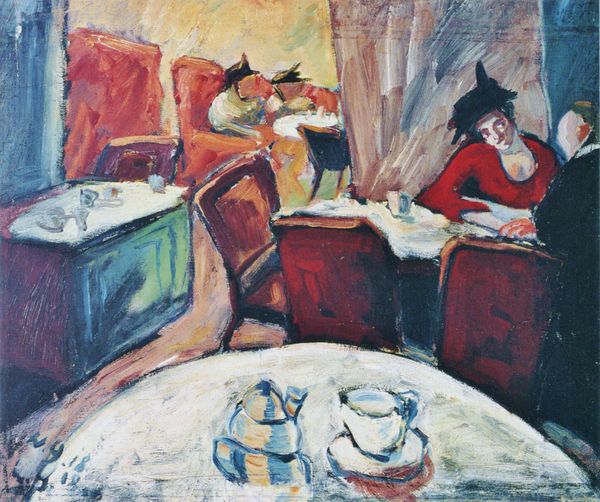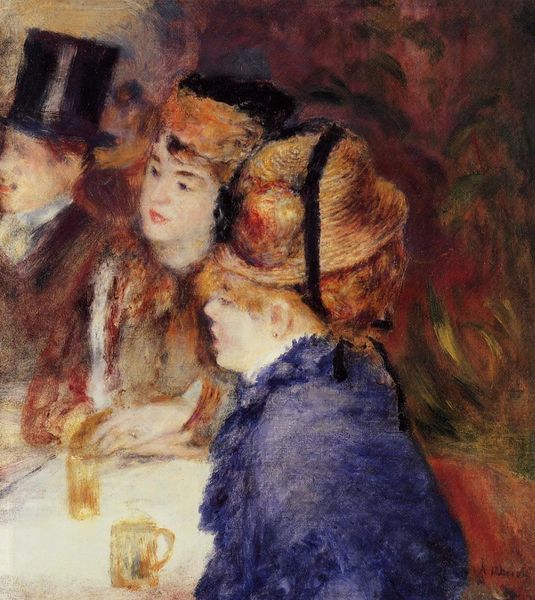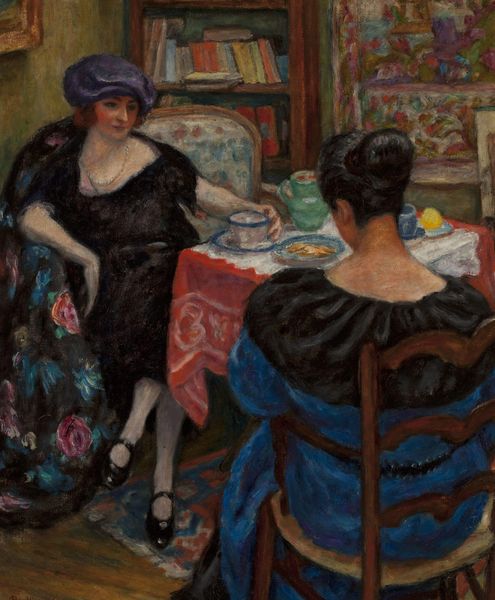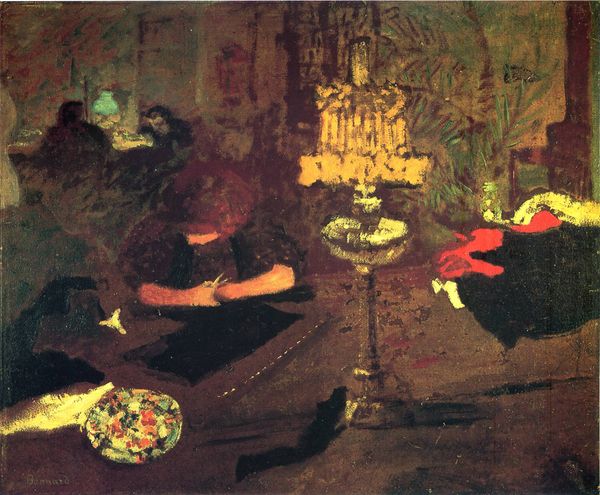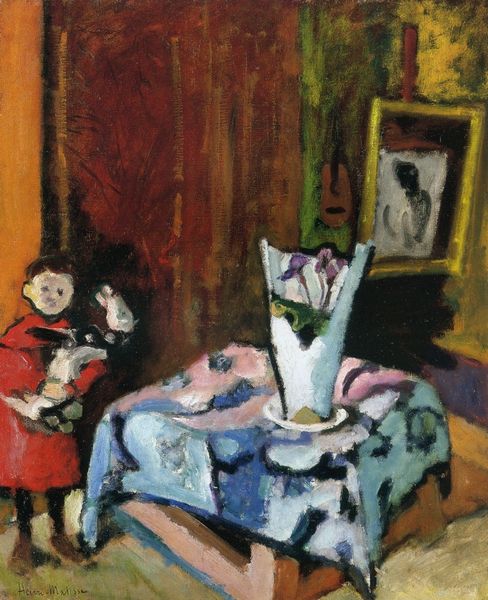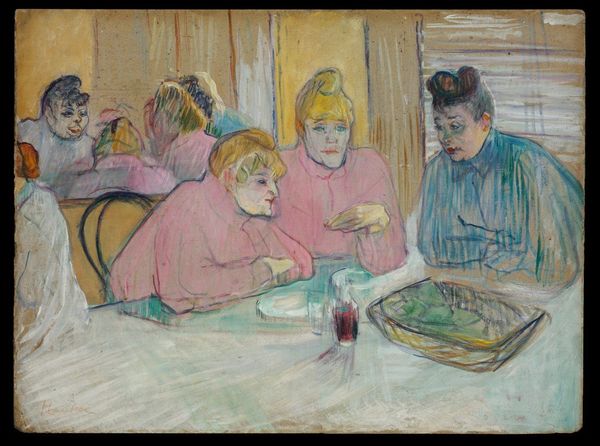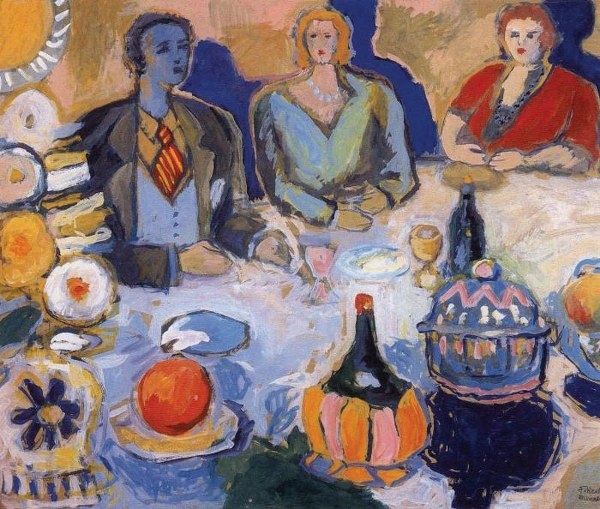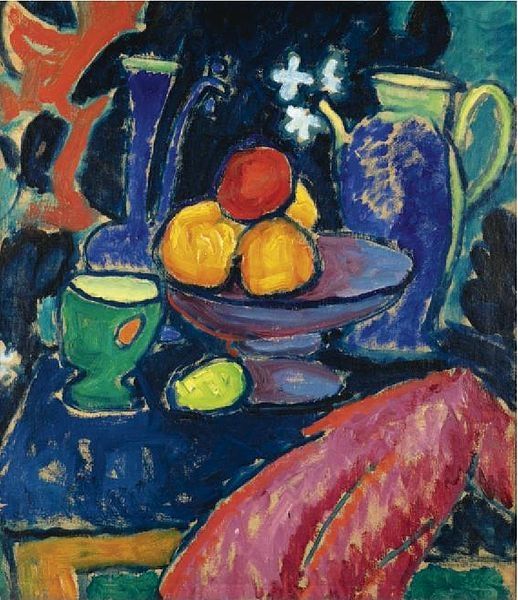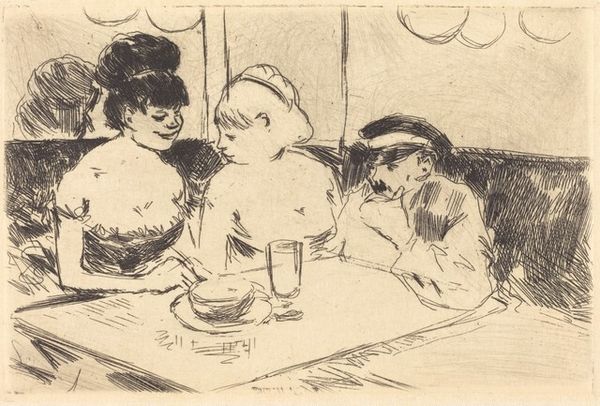
painting, oil-paint
#
portrait
#
fauvism
#
fauvism
#
painting
#
oil-paint
#
group-portraits
#
painting art
#
genre-painting
#
modernism
Dimensions: 117 x 114 cm
Copyright: Public domain
Curator: Ernst Ludwig Kirchner’s “Coffee Drinking Women,” painted in 1907, certainly grabs the eye. The figures, rendered in expressive, almost jarring colors, populate the scene with an intensity that seems to vibrate. What is your initial reaction? Editor: My first impression is the overall sense of unease. The yellow of the tablecloth is sickly, clashing aggressively with the flesh tones of the women, which are distinctly unnatural, almost mask-like. There's something about the rigidity in their postures that hints at social constraint. Curator: The piece embodies early modernist explorations. Note Kirchner's expressive brushwork—the visible application of paint emphasizes the material presence of the artwork. It resists a smooth, illusionistic surface, signaling the hand of the artist and the process of its making. This disrupts conventional class boundaries of the time separating art and craft. Editor: Absolutely. Thinking about it from a feminist perspective, the painting feels like a critique of bourgeois social rituals. Coffee drinking, as a social activity, particularly for women of a certain class, can be seen as a performance. They’re drinking coffee but seemingly trapped by the societal expectations attached to their gender and class. Curator: And in that ritual, materials take a crucial role—the porcelain, the table linen, the carefully selected and placed flowers. Consider their means of acquisition and disposal in a society undergoing rapid industrialization and global trade. Consumption becomes another language. Editor: Yes, the trappings of domesticity, made strange through his colour choices. This was made during a historical context where female agency and suffrage were surging alongside modernization and colonialism. This act of gathering feels at odds with a shifting society for women. The garish colors may further enhance that discomfort between an old ritual, and a growing fight for identity. Curator: These jarring aesthetics also challenge the conventional idea of beauty associated with traditional portraiture. There’s almost a sense of the grotesque there that upends the accepted modes of depiction for women, too. Editor: Precisely, Kirchner invites us to reconsider whose stories get told, by and through whom, even within domestic spaces of implied intimacy. Their rigid presence serves more to reinforce this silent confinement. The materiality reflects social tensions while questioning imposed definitions of feminine representation and expectations. It’s less coffee klatch, more cold conformity. Curator: A striking interplay indeed, to think how paint and brush can communicate so much. Editor: It does makes one contemplate how everyday experiences in art reflects wider, more difficult, conversations on society and social constraint, then and now.
Comments
No comments
Be the first to comment and join the conversation on the ultimate creative platform.

